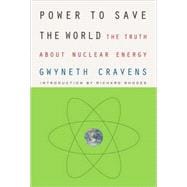
| Introduction: Gwyneth's Pilgrimage | p. xi |
| Origins | |
| Survival | p. 3 |
| Always Look at the Whole | p. 21 |
| Ambrosia Lake | p. 31 |
| The Invisible Storm | |
| Mother Nature and Fencepost Man | p. 65 |
| Undark | p. 80 |
| Into the Strange City | p. 112 |
| The Hidden World | |
| Risk and Consequence | p. 135 |
| Going to Extremes | p. 147 |
| Tiny Beads | p. 181 |
| The Kingdom of Electricity | |
| Man's Smudge | p. 193 |
| From Arrowheads to Atoms | p. 202 |
| Barriers | p. 216 |
| Unobtainium | p. 241 |
| Closing the Circle | |
| Ten Thousand Years | p. 265 |
| The Huge Factory | p. 273 |
| 32N164W | p. 280 |
| Those Who Say It Can't Be Done | p. 289 |
| The Gigantic Crystal | p. 328 |
| Borrowing from Our Children | |
| The Iron Chamber | p. 353 |
| "Water Them Anyway" | p. 360 |
| The Power Within | p. 372 |
| Notes | p. 375 |
| Glossary | p. 395 |
| Acknowledgments | p. 415 |
| Index | p. 417 |
| Table of Contents provided by Ingram. All Rights Reserved. |
The New copy of this book will include any supplemental materials advertised. Please check the title of the book to determine if it should include any access cards, study guides, lab manuals, CDs, etc.
The Used, Rental and eBook copies of this book are not guaranteed to include any supplemental materials. Typically, only the book itself is included. This is true even if the title states it includes any access cards, study guides, lab manuals, CDs, etc.
Excerpted from Power to Save the World: The Truth about Nuclear Energy by Gwyneth Cravens
All rights reserved by the original copyright owners. Excerpts are provided for display purposes only and may not be reproduced, reprinted or distributed without the written permission of the publisher.